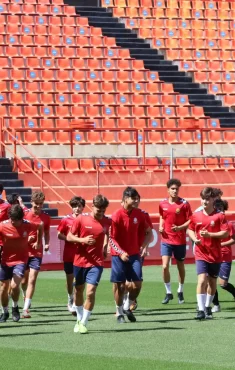Table of Contents
In our complete article on soccer tactics, we will tell you everything you need to know about the soccer game system, offensive and defensive strategies and much more. Read on to learn more about this world:
Soccer Tactics
Tactical soccer has become the new innovation in the sport, if you compare traditional soccer with the current one you will realize that nowadays much more importance is given to the position and the performance of the players.
Below you will find everything you need to know about the soccer system in general:
Defensive tactics
On the other hand, the line of 5 defenders is a bit more deceptive. Even if they are 5 players deployed in defense, the two defensive wingers can move up the full back and even get into attack in an offensive possession. The three center backs don’t usually go up much and are responsible for preventing any danger.
Line of four vs. line of five
When a team is limited in their offensive weapons, they usually go for an effective defensive strategy. This occasionally happens when one team is inferior to another and they play the game from defense to offense. Here are some defensive techniques in soccer:
One of the most basic soccer tactics at the defensive level is the line of four, this strategy consists of defending with two central players in front of the goalkeeper and with two lateral players on both the right and left. These lateral players do not have much offensive progression, so their job will be to defend the opposing team’s wingers and cut off the play.

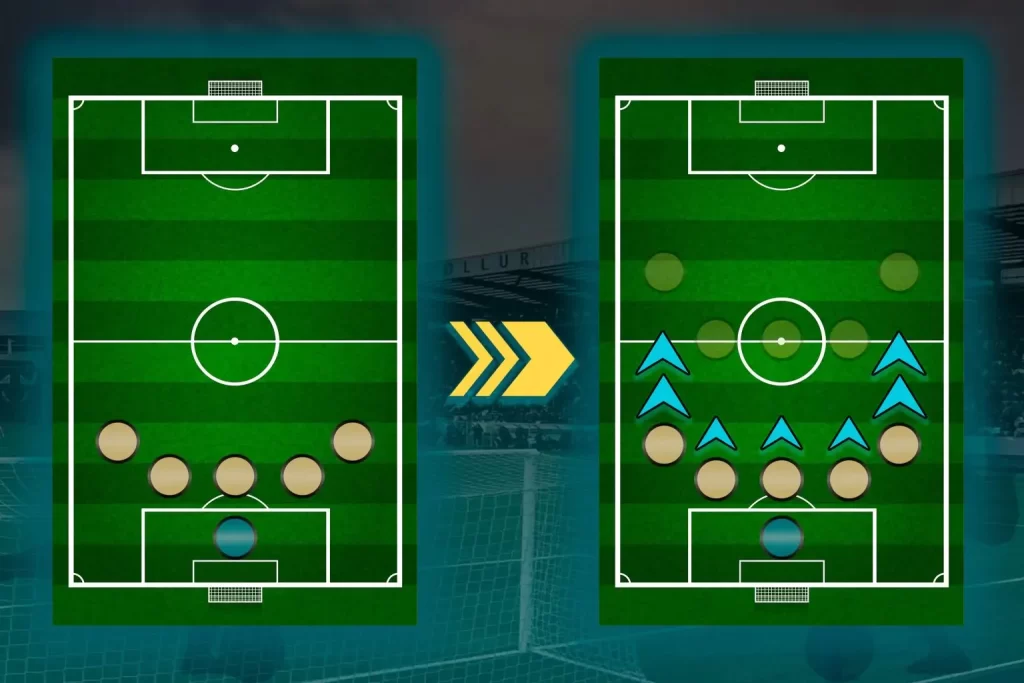
High pressure vs. low pressure
In soccer you can find teams that have a defensive strategy with high pressure, this means that all the players in their position will move forward further away from their goal and try to cut off the opponent’s play to set up a quick counterattack.
In the case that one team respects the other, they will use a lower pressure. This means that they will let the opponent touch the ball away from dangerous areas, but when they pass more than a quarter of the field, the defenses will come out to press.

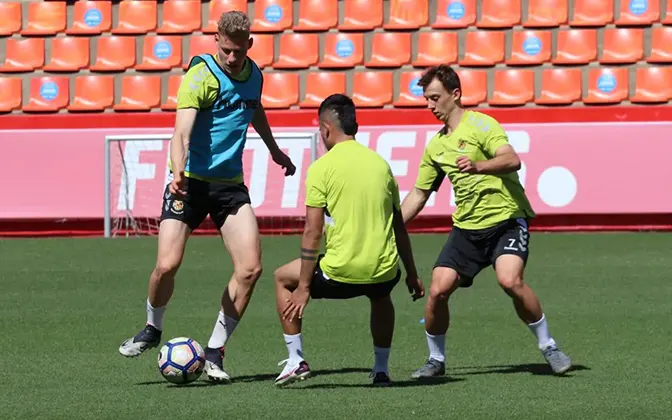
Man-to-man marking vs. zone marking
When a team has players with a lot of ball possession, the defending team chooses to try man-marking. This will make the opposing team’s players not think much about the play, since the moment they have the ball they will already have a defender behind them.
The zonal marking forces the defenders to take care of a specific area of the field in each play, therefore, it will be difficult for the opponent to find free spaces to set up attacking plays.
Starting from the back
In the case of coming out from the back, players are able to move the ball more patiently among themselves. This strategy allows them to control the pace of the game, control possession and intimidate the opponent in their own half.
Defending forward, forcing offside
There are offensive teams that seek to play with the pass filtered between the defenders, the best way to stop this attack is with an advanced defense that forces the attackers to stay in an advanced position.

Tilting
Tilting in soccer is one of the most innovative strategies in the sport, in modern soccer it is very common for defenders to use tilting to complicate rival attacks.
This tactic consists of compact movements between defenders, therefore, the team will defend depending on where the ball is. For example, in a left lateral attack, the defense will mark more on that side than on the right.
Offensive tactics
In soccer you can’t win if you don’t score goals, therefore, it is necessary to know the best offensive strategies that you can apply in a team:
Direct play vs. possession play
There are teams in soccer that stand out for having a more direct game, this means that they will play with fewer touches and more precise passes to the attackers. This is a lethal soccer tactic when there are very skilled ball players in the team.
The possession game is another classic soccer technique, in this case the players will play with more patience until they find the right opportunity to attack. It is a very useful strategy when there are high quality creators in the team.
Attacking on the wings vs. central attacking
When in a team there are dribblers who can beat any defender in 1-on-1, it would be a good strategy to attack on the wings. After beating the defenders, place a good cross or shot to the center of the box.
When a team plays with more ball possession and looks to create space between the defense, they opt to create danger with central attacks and few touches. This can leave the attacker free and direct to shoot at goal.
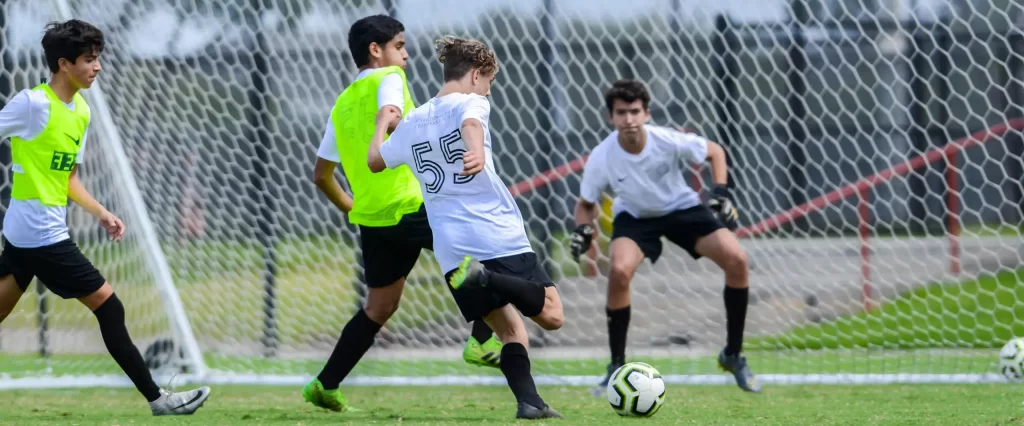
Midfield roles in playmaking
The midfield is the most important part of soccer, whoever controls it will control the tempo of the match. Midfielders are very important players in a team’s strategy, there is usually a “5” who is in charge of controlling the team’s midfield both in defense and attack.
You can also find the role of a creative player, who will be in charge of creating danger or even scoring goals with direct passes to the attackers. In addition, you can see the role of “attacking midfielder”, this is a player who defends less and who has more reach to the opponent’s area with his ability with the ball.
Importance of the ‘false nine
In traditional soccer, the “9” was a striker who made defenders dizzy with his great physical play. Now it is much more common to find the “False Nine”, this elusive attacker with much less physical play, but with a quick touch that can create space in the defense with simple touches.
A good “False Nine” can be important to break down a defense with a lot of physicality in both aerial and ground attack.
Breaking offsides, through balls
When the defending team presses high and intimidates opponents, practicing a quick attack with the through ball to break the offside would be an effective offensive tactic. A fast forward and outplaying the defenders can create the spaces to make the diagonal and be 1-on-1 with the opposing goalkeeper breaking the offside.
Transitions: From attack to defense and vice versa
Transitions are a fundamental part of both attacking and defending in soccer, they are a tactic that can prove lethal in scoring goals or even saving one. Here is more information:
Quick counterattacks
After a corner kick or a dangerous attack, a ball recovery can end in a goal after a quick counterattack.
This consists of setting up an attack from the defense, the ball will pass through the midfielder or winger to the striker in a fleeting run to the goal.

Retreat and defensive reorganization
When a counterattack is mounted by the opposing team, the defending team must retreat its defenders at high speed. Always with the intention of overcoming the opponent and cutting off the attack with optimal defensive reorganization.
Even if a defender cannot arrive in time, another outfield player can take his place in the position until the completion of the play. You can learn this defensive technique in our summer camps.

Changes of pace in the game
Changes of pace in the game can be decisive in a match, players with a quick touch can make the difference, as they can change the tempo of the game with two simple touches generating danger in just a few moments.
The change of pace can surprise the defense and leave it without response to a fleeting attack and precise passes to the feet of the players until they shoot at the opponent’s goal.
Set-piece tactics
Corner kicks
In corner kicks it is very common to always look for the highest players to head the ball into the goal. The physical touch on this set piece is very important, only the strongest and most skillful players can open up space in the defense to be left alone.
Some teams look to deceive defenders by making a short pass from the corner kick and then look for more open space to cross into the box or even shoot.

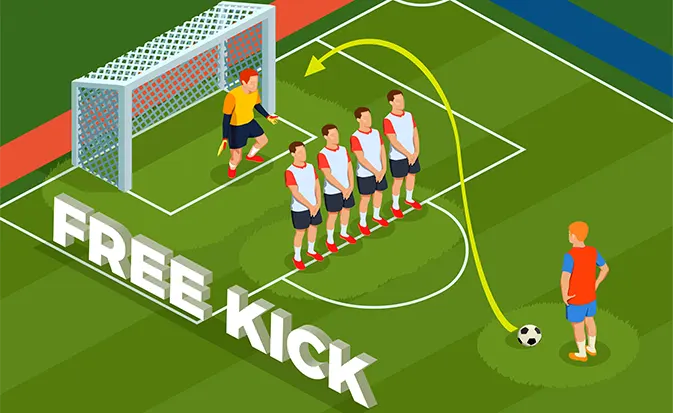
Direct and indirect free kicks
In direct free kicks, a skilled player can shoot directly into the goal to beat the opposing goalkeeper and score the goal. He can also deceive the defensive barrier and make a small cross into the box or a filtered pass to an unmarked player.
In the case of indirect free kicks further away from the goal, teams look for a good cross into the box to score the goal. They can also simply make short passes and look for a better chance of danger in the game.
Penalties: Strategies and psychology
Many players consider the penalty shootout as a “Lottery”, the truth is that it is a stopped ball with a lot of tension and that although it may seem easy, it is not always easy and the goalkeepers manage to avoid the goal.
Many players tend to shoot with power to leave the goalkeeper with no options, while others only shoot with low power but in a good direction unreachable. If the player is very confident, he can perform a “Panenka”, the technique which consists of making a small lob and fooling the goalkeeper.
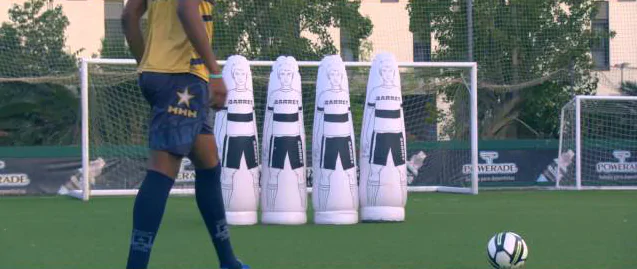
In the case of goalkeepers, they usually study each kicker of the opposing team and guess where they will take the penalty kick. Many goalkeepers use psychological techniques to enter the player’s mind and distract them. In the goalkeeper campuses, important skills are worked on to successfully overcome these situations.
Tactical adaptation according to the opponent
Study of the opponent: strengths and weaknesses
Planning a style of play based on a team’s strengths and weaknesses is a smart way to approach the match. For example, if the team has problems with the aerial ball, it would be a good tactic to attack with crosses into the box.
Or in case the team is playing with an advanced defense, the team can play a quick game with passes to the hole to break the offside or advanced position.

Tactical changes in the middle of the game
If the team’s approach does not work at the start of the match, the coach can make a series of changes between players to try a new tactic that will complicate the opponent’s defense or attack.
Fundamentals of soccer tactics
Definition of tactics
Tactics in soccer consist of a series of movements or actions that are applied in the game to achieve the objectives set out in the pre-match strategy. Tactics are fundamental to win soccer matches.
Difference between tactics and strategy
The difference between tactics and strategy is simple, the strategy is the one that is proposed before the start of the match, it has a series of objectives that the team seeks to achieve during the match.
In the case of tactics, they are the ways or actions that the players must apply to achieve these objectives within the strategy. For example; if the team’s strategy is to surprise the opponent’s advanced defense, the tactic to apply will be to make quick passes to the hole to break the advanced position.

How to learn soccer tactics
In case you want to learn the best and most innovative soccer tactics, you can’t miss the High Performance Academies we offer on our website. Or you can also enter our Soccer Tryouts to join a team or academy and start your career.
We want to answer your soccer questions!
Some examples of specific tactics
Tactical soccer is all about the planned strategies that a team employs to achieve its objectives on the pitch. This includes how players organize themselves to defend, attack and control the game. One famous example of a specific type of tactics is Barcelona’s “tiki-taka,” which relied on short passing and ball possession to wear down the opponent, and another is the “counter-attack,” where a team defends solidly and then looks for quick transitions to attack and surprise the opponent.
How many types of tactics exist and what are they?
In soccer we find a great many different types of attacking and defensive tactics. As regards attacking strategies we have direct play, possession play, attacking down the flanks, central attacking, the “false nine” and through balls.
Among the defensive tactics, we can apply the following: a back-four, back-five, high pressing, low pressing, man-to-man marking, zonal marking, playing out from the back, a high defense and defensive shifting.
What are attacking tactics?
Attacking tactics focus on advancing towards the opponent’s goal and scoring goals. Strategies such as quick counterattacks, positional play to create spaces, passing combinations, and off-the-ball movements are crucial. Penetration through the wings and crossing into the box are common tactics. Moreover, set-piece plays from corner kicks or free-kicks near the box are used to create goal-scoring opportunities. Creativity and coordination are essential to unsettle the opposing defense.
What is the most simple, basic team tactic?
A good tactic is one that is successfully executed on the pitch. For example, if the opponent is weak down the flanks, an effective attacking tactic would be to focus the game in these areas and try to beat the defenders in 1-on-1 situations.
What’s a good tactic?
A good tactic is one that is successfully executed on the pitch. For example, if the opponent is weak down the flanks, an effective attacking tactic would be to focus the game in these areas and try to beat the defenders in 1-on-1 situations.

